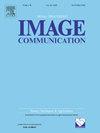Analysis discriminative convolutional graph dictionary learning for generalized signal classification
IF 2.7
3区 工程技术
Q2 ENGINEERING, ELECTRICAL & ELECTRONIC
引用次数: 0
Abstract
Analysis discriminative dictionary learning (ADDL) techniques have been studied for addressing image classification problems. However, existing ADDL methods ignore the structural dependency within the signals and cannot fit the general class of signals with irregular structures, including spherical images and 3D objects. In this paper, we propose a novel analysis discriminative convolutional graph dictionary learning method that fully exploits the structural dependency for signal classification, especially for irregular graph signals. The proposed method integrates the graph embedding information to analysis convolutional dictionary learning to derive a set of class-specific convolutional graph sub-dictionaries for extracting consistent class-specific features. An analytical decorrelation term is introduced as regularization to constrain the linear classifier for each class and improve the discrimination ability of dictionary-based sparse representation. Furthermore, we develop an efficient alternating update algorithm to solve the formulated non-convex minimization problem that simultaneously achieves sparse representation using ISTA and optimizes the convolutional graph dictionary and classifiers in an analytic manner. To our best knowledge, this paper is the first attempt to achieve analysis dictionary learning for generalized classification of signals with regular and irregular structures. Experimental results show that the proposed method outperforms state-of-the-art discriminative dictionary learning methods by 0.26% to 2.68% in classification accuracy for both regular and irregular signal classification. Notably, it is comparable to recent deep learning models with up to about 1% accuracy loss in irregular signal classification.
判别卷积图字典学习在广义信号分类中的应用
分析判别字典学习(ADDL)技术已被研究用于解决图像分类问题。然而,现有的ADDL方法忽略了信号内部的结构依赖性,无法拟合一般类型的不规则结构信号,包括球面图像和三维物体。在本文中,我们提出了一种新的分析判别卷积图字典学习方法,该方法充分利用了信号分类的结构依赖性,特别是对不规则图信号的分类。该方法结合图嵌入信息对卷积字典学习进行分析,得到一组特定类的卷积图子字典,用于提取一致的特定类特征。引入解析解相关项作为正则化来约束每一类的线性分类器,提高基于字典的稀疏表示的判别能力。此外,我们开发了一种高效的交替更新算法来解决公式化的非凸最小化问题,该算法同时使用ISTA实现稀疏表示,并以分析的方式优化卷积图字典和分类器。据我们所知,本文是第一次尝试实现对规则和不规则结构信号进行广义分类的分析字典学习。实验结果表明,该方法在规则和不规则信号的分类准确率上都比目前最先进的判别字典学习方法提高了0.26% ~ 2.68%。值得注意的是,它与最近的深度学习模型相当,在不规则信号分类中准确率损失高达1%。
本文章由计算机程序翻译,如有差异,请以英文原文为准。
求助全文
约1分钟内获得全文
求助全文
来源期刊

Signal Processing-Image Communication
工程技术-工程:电子与电气
CiteScore
8.40
自引率
2.90%
发文量
138
审稿时长
5.2 months
期刊介绍:
Signal Processing: Image Communication is an international journal for the development of the theory and practice of image communication. Its primary objectives are the following:
To present a forum for the advancement of theory and practice of image communication.
To stimulate cross-fertilization between areas similar in nature which have traditionally been separated, for example, various aspects of visual communications and information systems.
To contribute to a rapid information exchange between the industrial and academic environments.
The editorial policy and the technical content of the journal are the responsibility of the Editor-in-Chief, the Area Editors and the Advisory Editors. The Journal is self-supporting from subscription income and contains a minimum amount of advertisements. Advertisements are subject to the prior approval of the Editor-in-Chief. The journal welcomes contributions from every country in the world.
Signal Processing: Image Communication publishes articles relating to aspects of the design, implementation and use of image communication systems. The journal features original research work, tutorial and review articles, and accounts of practical developments.
Subjects of interest include image/video coding, 3D video representations and compression, 3D graphics and animation compression, HDTV and 3DTV systems, video adaptation, video over IP, peer-to-peer video networking, interactive visual communication, multi-user video conferencing, wireless video broadcasting and communication, visual surveillance, 2D and 3D image/video quality measures, pre/post processing, video restoration and super-resolution, multi-camera video analysis, motion analysis, content-based image/video indexing and retrieval, face and gesture processing, video synthesis, 2D and 3D image/video acquisition and display technologies, architectures for image/video processing and communication.
 求助内容:
求助内容: 应助结果提醒方式:
应助结果提醒方式:


